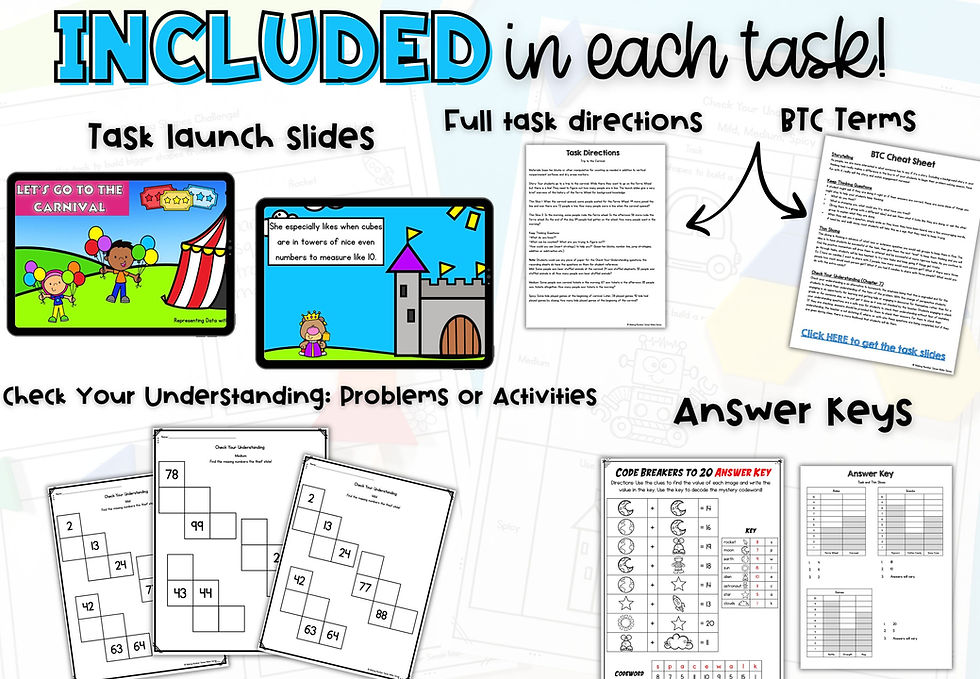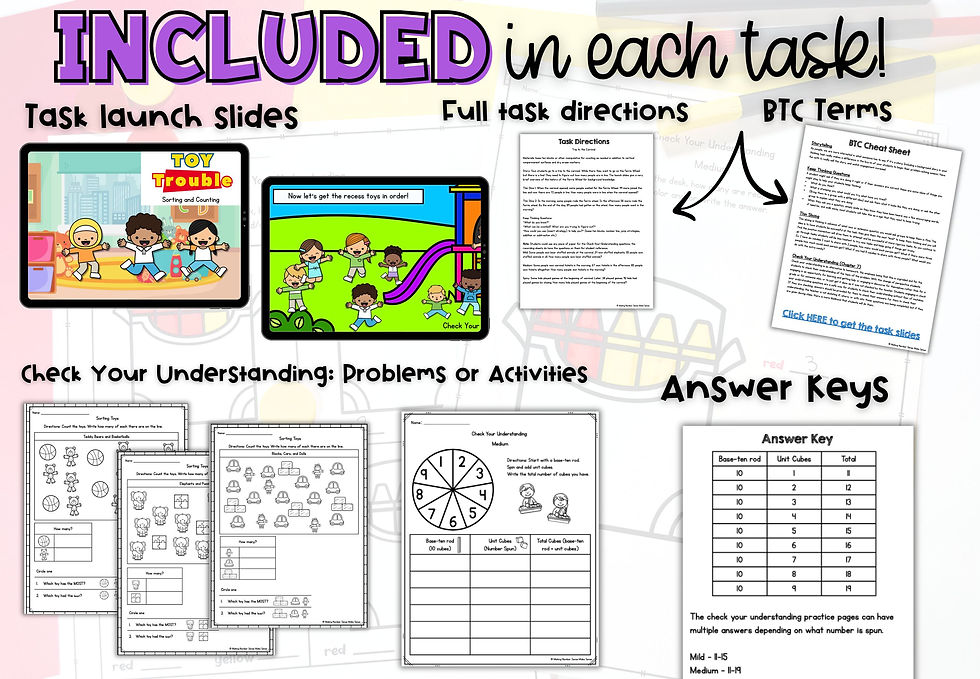The First Week of Math in Early Elementary: Setting Up Your Math Workshop for Success
- Lara

- Jul 10
- 5 min read
The first week of school is filled with new things! New students, new routines, and a new community, just starting their journey together for the next 180 days! Setting up expectations and routines helps your students know what to expect, which is crucial to a successful school year.
When your students walk into your classroom, you never know what you’ll get, and if most students can follow the routines and expectations you’ve set, it allows you to give students who need a little extra support the attention they need to access what the rest of your students are doing successfully.

Starting With Number Talks, Setting Up A Number Sense Routine
Number sense routines or number talks at the beginning of your lesson help to “break the ice,” so to speak. Your students start to see that expressing their opinion is encouraged, and they can start to have academic conversations in bite-sized chunks that support later problem-solving situations, explaining their thinking, and cooperative learning.
A great number sense routine to begin the year is “Which One Does Not Belong?” In this number sense routine, students look at a collection of images, up to four, and decide which one does not belong.
This is a great number talk to start the year because there are no wrong answers, so your students can build confidence in respectfully voicing their opinion in front of you and their peers. You can also take this opportunity to show how to use a signal of your choosing so others can agree with the student who is talking without interrupting another’s turn. My partner teacher used the “me too” or “likewise” ASL sign, so I used the same, but you can use any signal that works for your class. You can also encourage students to share a different opinion or disagree politely and explain their thinking.
If you’d like to hear more about implementing this number sense routine, you can watch this video or read this blog post.
Introducing New Materials: Using Math Manipulatives in the Classroom
It’s a nightmare to have math manipulatives flying across the classroom or being broken, so introducing an appropriate way to use, care for, and put away materials is a must!
You can try a Responsive Classroom technique called a Guided Discovery. The purpose of a Guided Discovery is to create excitement about a classroom material, share experience, or introduce the manipulative, properly use the material, and then clear it up quickly but carefully.
To start, you cover or otherwise hide the manipulative you are introducing, you could shake it or take guesses from your students on what they think it might be to build excitement and anticipation.
After you reveal the manipulative, you ask if students have seen or used the manipulative before. If they have, you share the name and ask how they used it in the past; if they haven’t, you name it and ask for ideas on how students could use the manipulative.
Then, you model how to use the manipulatives using some of their suggestions, and give each student some manipulatives and about 10 minutes to use them. While they are all using them, circulate and ask the students questions about what they are making.
When the time is up, you can do a gallery walk so students can see what their peers have made, reminding them not to touch other students’ work, just look. You can reflect as a class on what they liked about the manipulatives, etc.
Finally, model how to clean up the manipulatives and let them do the same.
You can do the same for the other manipulatives you’ll use throughout the week and school year.
Setting Up Math Stations or Centers: Reading the Math Station or Math Center Chart
For this next part, I’m going to use the example of three groups. Once you’ve introduced enough manipulatives for each table or group, you can start to have them rotate to different areas of the room as centers or stations.
I’ve used a pocket chart and a digital chart to show students which station or station they are going to next. I prefer the digital chart because it's easier to switch would the manipulative to so they know what they are doing when they get there.
I like to set a timer for the stations so we don’t lose track of time, and when the timer goes off, it's time to clean up. Word of caution, if kids are still learning about time, they may start cleaning too early, even if the timer has not gone off, you can keep the timer on a different screen so you can see it, but they can't.
Before they start their stations, if there is a new option, I introduce it to them beforehand in a Guided Discovery, or if it is a game, I show them how to play, then look at the chart together to learn how to “read” it so they know where they are going. Before letting them go, make sure to discuss expectations for how to move around the room safely!
After they hear the timer, model, remind, or ask them how they can clean up calmly but quickly, and remind them to look at the chart so they know where they are going next, and walk there either when you give the signal or as they finish, whichever works best for your students.
Note: Most classes can handle rotating, and it helps them be more independent, but if you see that transitions are difficult for your students, you can consider not having the students move and you switch the activities they are doing.
Problem Solving
Problem-solving can be difficult to set up. Some students are not sure how to approach a problem, let alone solve it, or need to work on their stamina and perseverance.
Using the Building Thinking Classrooms Model has been invaluable to working on those skills to create a classroom of confident, risk-taking problem solvers.
You can read more about setting up a thinking classroom here a follow up with the next tasks here, and some of the first tasks I’ve done here.
For this post, let’s focus on what can be done in the first week before jumping into tasks related to the curriculum or standards. The first task I give is getting to the correct workspace and using a shared marker to create one drawing together. For this activity, they are given random partners (the same goes for the rest of the year), and it is important to discuss that they may not be partnered with their best friend, but when they are working towards the same goal, they can make magic together.
While working, remind them to only erase something that someone else drew unless they agree, and, similar to introducing materials, give students the opportunity to do a gallery walk to see and discuss what others did.
Throughout the week, give tasks like using blocks to build a tower, or counting a collection of 10 or fewer objects, things that are low stakes, but get students into the routine of working together, completing a task, gathering knowledge from others in the room, and talking to each other about what they are doing.
Sample Week First Week
Monday: Number talk, Guided Discovery
Tuesday: Number talk, Problem-solving session
Wednesday: Number talk, Guided Discovery, Problem-solving session
Thursday: Number talk, Guided Discovery, Problem-solving session
Friday: Number talk, rotating to different centers
Forecast for the next week: Continue practicing rotating centers during math workshop, introducing new manipulatives, and giving non-curricular tasks, with a few simple tasks aligned to the curriculum sprinkled in. Workshop and problem-solving back to back may be a lot, consider alternating days or breaking it up with other activities.
Final Note:
I hope these ideas set your school year up for success, starting with the first week of school!










Comments